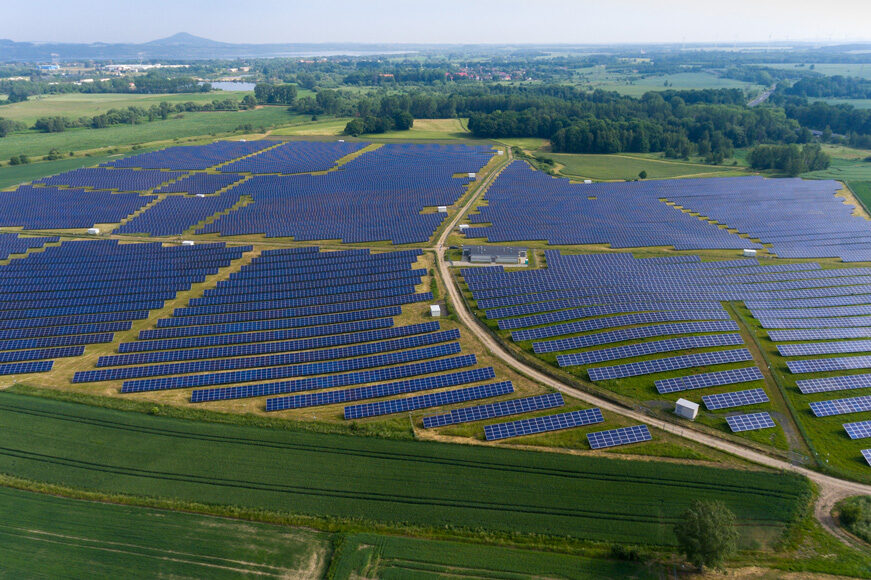Are you interested in solar energy storage, or perhaps you are wondering how energy storage works?
Energy storage refers to a system capable of storing energy from different sources and using it at another time. One of the sources is the sun, which can be said to be an inexhaustible source of energy. Here, at ZPUE, we know this all too well because we have completed our first photovoltaic installations already in 2003! We are present in every sector of renewable energy – from generation and distribution to the industry and energy storage.
Solar energy storage – confidence in photovoltaic systems
We observe an increasing number of solar farms using solar energy. This is a new and very important trend in Poland. However, what we see is more than just photovoltaic panels that collect solar energy and transform it into electricity. Photovoltaic systems also include components such as inverters, medium voltage (MV) switchgear with control systems, low voltage (LV) switchgear and MV/LV transformers. In short: photovoltaic installations are systems provided with equipment to convert solar energy and supply it into the distribution grid. The topology of PV installation is usually distributed, with inverters ranging from 60 to as much as 250 kW, installed directly on the support structures of the photovoltaic panels. For such solar farms to be efficient, it is necessary to use modern MV and LV switchgear in transformer stations manufactured specifically for such installations.
How do photovoltaic systems work?
A solar farm consists of thousands of panels built from photovoltaic cells, i.e., semiconductor components. It is in these components that solar radiation is converted into electricity through a photoelectric effect or, more specifically, the generation of potential difference due to the movement of electrons caused by the energy from photons. To transfer the generated electricity to the distribution system, it is necessary to sign a contract with the electric utility company.
Smaller photovoltaic installations are even more popular. Photovoltaic panels can now increasingly be found on the roofs of houses. Such an installation requires the replacement of the billing meter with a two-way meter, which can significantly reduce the electricity bills. For every 1 kWh transferred to the power grid, prosumers can receive 0.8 kWh (if the installation has a capacity of up to 10 kW) or 0.7 kWh (if the installation has a capacity higher than 10 kW).
Solar energy storage
The energy we obtain from photovoltaic panels largely depends on weather conditions. In the summer, the installation generates surplus energy, and in the winter, the amount of solar energy is much smaller. To be able to use the surplus energy, it is necessary to provide the system with, for instance, a battery energy storage system. Such a system uses a two-way converter of alternating current (AC) into direct current (DC), which is used to charge the batteries (normally lithium-ion batteries). Every storage system has a specific power given in watts (W) and capacity in watt-hours (Wh). If the parameters of the storage system are selected correctly, it can be charged in times of energy surplus and discharged for a specific time after the period of PV generation.

